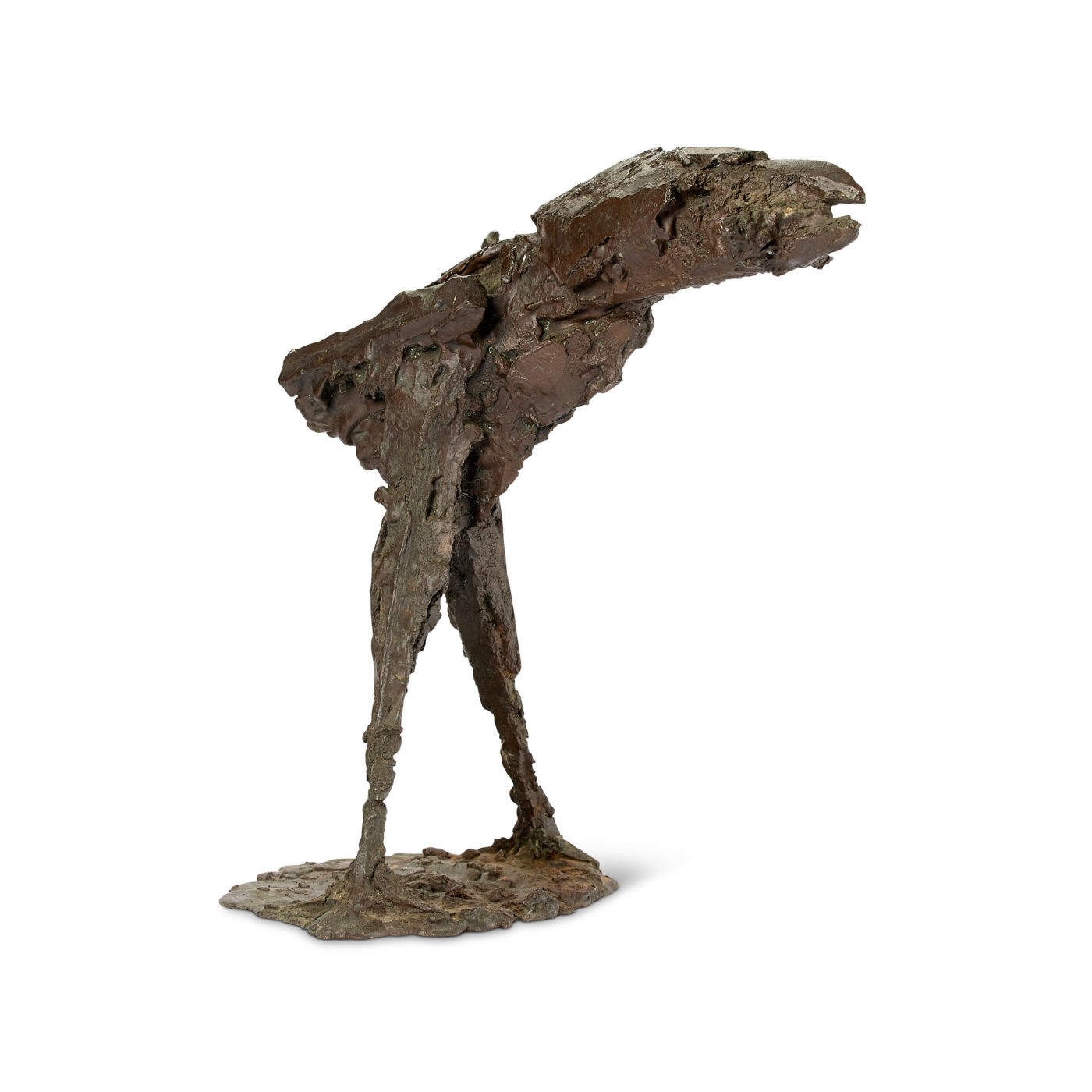Sculptor, draughtsman and teacher. She studied at Guildford School of Art, 1949-53, under Willi Soukop and Bernard Meadows. She taught at Chelsea School of Art from 1951-61, St Martin’s School of Art, 1954-62, and at the Royal College of Art from 1965-67. After early exhibiting with the London Group, Frink had a one-man show at St George’s Gallery in 1955 and four years later at Bertha Schaefer Gallery, New York. Over the years she established herself as a sculptor concerned with themes, such as goggle men, running men and horses with and without riders. She also worked on many major public commissions, such as Wild Board for Harlow New Town; Blind Beggar and Dog at Bethnal Green and a noble horse and rider on Piccadilly.
Dame Elisabeth Frink, CH RA (1930-1993), Bird, 1959

Bronze
Signed (on base)
Height: 15 in (38.1 cm) Conceived in 1959 in an edition of 6
Collections: With the Beaux Arts Gallery in 1997 when acquired by Jean Marsden and thence by descent
Literature: Edwin Mullins(intro)The Art of Elizabeth Frink 1972(19) ill; Bryan Robertson (intro) Elizabeth Frink Sculpture: Catalogue Raisonne 1984 pp 148-149 (56) ill; Sarah Kent Elisabeth Frink: Sculpture and Drawings 1952-1984 ,London RA, 1985, pp 12,50 (12); Annette Ratuszniak Elisabeth Frink Catalogue Raisonne Sculpture 1947-93,2013 p.66 (FCR67) ill; Calvin Winner Frink: Humans and other Animals, The Sainsbury Centre UEA ,2018 ,p.106,ill
Exhibited: The Bertha Schaefer Gallery, New York 1959
NB : In the references cited above other casts were reproduced or exhibited.
The beak of the present bird has strong claims to be the most formidable beak in all of Frink’s representations of the subject. Complete with carrion the bird radiates aggression and belligerence-the head and neck of the present sculpture being compared with the ‘’nose of a fighter plane’’ (Bryan Robertson op cit p.56).Sarah Kent in the introduction to the RA Exhibition in 1985 writes that ‘’ the first hint of real aggression comes with Bird 1959,his head and body a taut horizontal bar ready, at a moment’s notice, to lunge and strike without mercy….’’
‘’In the emphasis on beak, claws and wings…they were really vehicles for strong feelings of panic, tension, aggression and predatoriness ‘’Frink wrote, but cautioned ‘’that they were not surrogates for human beings or states of being’’.